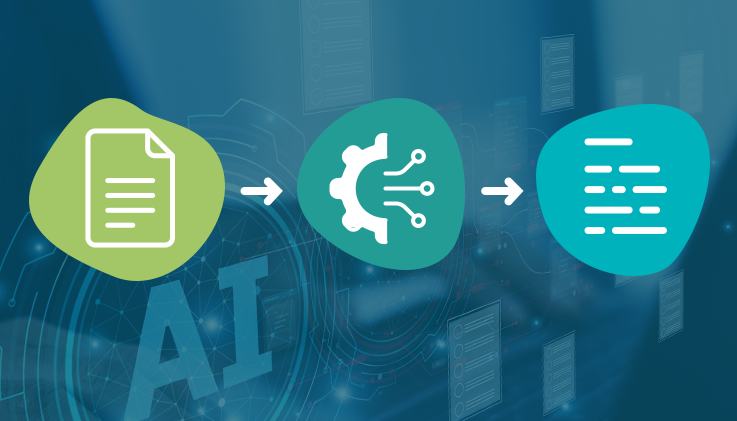The rise of Generative AI, particularly the launch of powerful digital tools like ChatGPT (and its subsequent improved versions), marks a seismic shift in the technology landscape. Today, Generative AI is not just a buzzword; it is a transformational moment that is changing how software is created and consumed.
With so much talk of artificial intelligence (AI) and automation coming from almost every direction, each promising to revolutionize work, those who are not closely following the topic can feel easily overwhelmed. After all, AI is divided into three categories: Traditional AI, Generative AI, and Artificial Superintelligence. It is easy to see why confusion among the three is common.
The tech wizardry surrounding the development of artificial intelligence has given rise to two distinct marvels — general AI and Generative AI. Often referred to as "strong" or "human-level" AI, general AI envisions machines with human-like cognitive abilities capable of understanding, reasoning, and learning across diverse tasks. Generative AI, on the other hand, focuses on creativity, enabling machines to produce novel content like images, text, and music, inspiring awe through its ability to conjure something from nothing.
Impact of AI on businesses
The all-pervading use of general AI and its subsequent benefits significantly impact our day-to-day lives, besides helping enterprises deliver enhanced experiences to customers. At home, language-enabled assistants and search engines offer us the comfort of being able to access content and knowledge others put on the Internet for us 24/7.
The usage of traditional AI in planning, product development, marketing, sales, operations, logistics, and customer support departments not only improves the overall organizational efficiency by automating mundane tasks but also helps brands attain their goal of providing a stellar experience to employees and clients alike.
General AI processes complex queries and responds to user prompts by constructing clear, human-like responses. Interestingly enough, such responses are topical. That is to say that the answers given by the AI-powered tool are not pre-recorded or fed into the system from before.
Instead, the tools/software using traditional artificial intelligence learn how to respond to commands promptly after receiving extensive training in conventional AI, machine learning (ML), natural language processing (NLP), and computational linguistics, among other technologies. A distinctive trait of technologies using traditional AI is that the systems learn from real-life use cases and scenarios to produce results that mimic or are identical to humans.
Also read: Application Of Artificial Intelligence In Customer Support
How ThinkOwl’s AI provides enhanced experiences to customers
Most support teams in most customer contact and support centers, support agents typically have to juggle many tasks to be able to provide quality assistance to customers. To close a ticket successfully, agents have to toggle between communication channels (e.g., email, text, chat, phone, social media), data management systems (e.g., inventory,) and workflow systems (e.g., case processing, requests, or complaints related to shipping, delivery, returns, etc.) besides logging case details, researching, or escalating the issue to varying extents in different places.
Integrating AI tools into your business gives your team more autonomy and empowers employees to perform better in the workplace. AI-powered decision-making, predictive decisioning, and intelligent workflow automation help your teams transition from providing reactive service to proactive support to your clients.
AI assists customer support teams
In the context of customer service, ThinkOwl's AI always routes documents, emails, and notifications to precisely the right employee at exactly the right time. The AI learns the type and quality of the data needed to categorize incoming tickets.
The software recognizes patterns and similarities using ML and select algorithms. The AI within the software can extract contextual data from unstructured content, recognize coherences, determine probabilities, and draw conclusions.
Besides autonomously learning how to provide solutions, the AI in ThinkOwl observes human behavior in the context of comparable business functions as well as customer support processes. With sufficient training, the software provides valuable suggestions and recommends actions to your client support teams, thus improving productivity and effectiveness, thereby boosting revenue generation.
AI streamlines business workflows
Besides uncovering the untapped potential of CX-built AI solutions and helping entrepreneurs overcome challenges, AI is revolutionizing customer, employee, and executive interactions.
Along with the ability to process gigantic volumes of data within an ultrashort amount of time, General AI or traditional AI, can perform a host of functions to assist your business.
The functional versatility of artificial intelligence in businesses can be summarized as follows: AI can “think,” “process information,” and “execute.”
- Scenarios where AI thinks: deciding, comparing, empathizing, etc.
- Scenarios where AI processes information: gauging, evaluating, scrutinizing, suggesting, and explaining.
- Scenarios where AI executes: capturing, searching, reminding, prompting.
Detailed look at generative artificial intelligence
Generative AI is created with machine learning (ML) models. ML models are statistical engines that try to learn the distribution of data. From image classifiers and regression models to the more complex models that generate text and images—this is true for all kinds of large language models (LLMs). The closer the model’s parameters approximate the underlying distribution, the more accurately they predict real-world events.
What we are witnessing today is the power of Generative AI being harnessed by businesses worldwide as a general-purpose technology with an impact similar to what the invention of the steam engine did to the Industrial Revolution.
The continuous developments in Generative AI have helped a few companies create multiple versions of their product/solutions, each being an upgrade of its last release.
So far, there is a lot of buzz about such solutions as people and enterprises discover more innovative applications for the technologies. Before discussing the future of Generative AI, let us take a quick look at the history of this technology.
Timeline of the evolution of Generative AI
-
Stage 1: The groundwork for the evolution of Generative AI was laid down in 2010 when AI translated natural language perfectly.
-
Stage 2: AI gets prudent at understanding languages; AI can now accurately analyze the meaning of a word in a phrase simply by scrutinizing the context in which the word appears.
-
Stage 3: From 2017 to 2022, advancements in Generative AI enabled the development of large language models that produced accurate results.
-
Stage 4: The most significant breakthrough of Generative AI happened in 2022, in the form of OpenAI’s “Chat Generative Pretrained Transformer” (ChatGPT). ChatGPT gave its users simple access to a large language foundation model.
Generative AI is trained on a broad set of unlabeled data and evolving techniques that can be used for different tasks, with additional customization and fine-tuning. Businesses can use the power of Generative AI to create seamless self-service experiences and streamlined agent interactions without exposing themselves to undue risk. Conversational AI enhances workforce capabilities, automates tasks, and revolutionizes consumer-business interactions.
Marketers integrate Generative AI functionality into their martech stacks to improve lead gathering and lead nurturing and successfully guide customers through the sales funnel with personalization, contextual content production, and scalability.
ThinkOwl, a powerful AI Plaform, helps businesses and their support teams expand their abilities and deliver results exceeding customer expectations by ensuring a frictionless collaboration between humans and AI-powered systems. The rapid advancements made in Generative AI have the potential to inspire an entirely new kind of productivity in humans. At ThinkOwl, we know that when Generative AI is used, completing tasks with a creative flair becomes effortless. ThinkOwl always ensures that your agents and customers reap the benefits of AI-powered tech, thus creating memorable experiences.
Also read: Application Of Customer Sentiment Analysis In Businesses
What is the future of AI?
The future of Generative AI holds great promise and potential, and here is what we can expect it to deliver.
-
Artificial intelligence will be loaded with advanced capabilities: Generative AI will get more sophisticated and capable of performing various tasks. The AI will better grasp semantics, understand the context of commands or messages, engage in more nuanced conversations, and offer more accurate and relevant responses.
-
Multimodal AI: We can see a future where Generative AI integrates text with other forms of content, such as illustrations, images, and videos, enabling more comprehensive and interactive interactions.
-
AI will have domain and subject matter expertise: Future AI models will have more profound expertise in specific domains, allowing for more accurate and detailed discussions on specialized topics.
-
AI will witness wider adoption: Tools and solutions based on Generative AI, like ChatGPT, will become even more prevalent across industries, assisting in customer service, education, healthcare, content creation, and more.
-
AI will reduce communication barriers: AI translation and language processing capabilities will advance, making it easier for people worldwide to communicate, collaborate, and create. This will, in turn, enhance learning and adaptation.
ThinkOwl's OwlDesk is a cloud-based, AI-powered customer service solution with intelligent automation capabilities. The software uses Generative AI to help your customer support teams deliver stellar CX. Experience the convenience of ThinkOwl. Sign up for a 30-day free trial now.












